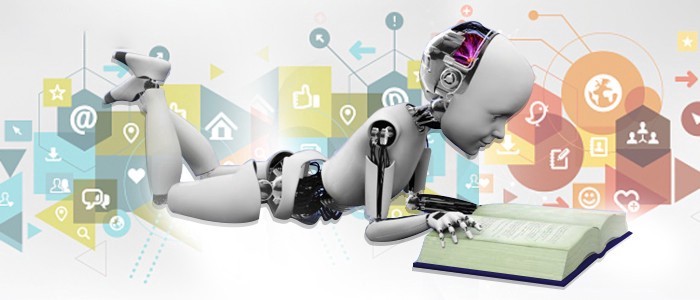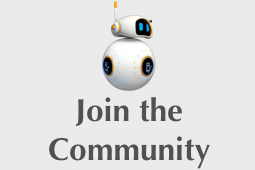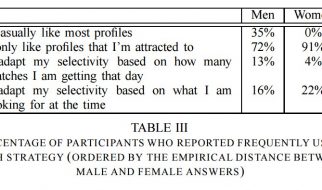
Artificial Intelligence (AI) is everywhere. Possibility is that you are using it in one way or the other and you don?t even know about it. One of the popular applications of AI is Machine Learning (ML), in which computers, software, and devices perform via cognition (very similar to human brain). Herein, we share few examples of machine learning that we use everyday and perhaps have no idea that they are driven by ML.
1. Virtual Personal Assistants
Siri, Alexa, Google Now are some of the popular examples of virtual personal assistants. As the name suggests, they assist in finding information, when asked over voice. All you need to do is activate them and ask ?What is my schedule for today??, ?What are the flights from Germany to London?, or similar questions. For answering, your personal assistant looks out for the information, recalls your related queries, or send a command to other resources (like phone apps) to collect info. You can even instruct assistants for certain tasks like ?Set an alarm for 6 AM next morning?, ?Remind me to visit Visa Office day after tomorrow?.
Machine learning is an important part of these personal assistants as they collect and refine the information on the basis of your previous involvement with them. Later, this set of data is utilized to render results that are tailored to your preferences.
Virtual Assistants are integrated to a variety of platforms. For example:
- Smart Speakers: Amazon Echo and Google Home
- Smartphones: Samsung Bixby on Samsung S8
- Mobile Apps: Google Allo
2. Predictions while Commuting
Traffic Predictions: We all have been using GPS navigation services. While we do that, our current locations and velocities are being saved at a central server for managing traffic. This data is then used to build a map of current traffic. While this helps in preventing the traffic and does congestion analysis, the underlying problem is that there are less number of cars that are equipped with GPS. Machine learning in such scenarios helps to estimate the regions where congestion can be found on the basis of daily experiences.
Online Transportation Networks: When booking a cab, the app estimates the price of the ride. When sharing these services, how do they minimize the detours? The answer is machine learning. Jeff Schneider, the engineering lead at Uber ATC reveals in a an interview that they use ML to define price surge hours by predicting the rider demand. In the entire cycle of the services, ML is playing a major role.
3. Videos Surveillance
Imagine a single person monitoring multiple video cameras! Certainly, a difficult job to do and boring as well. This is why the idea of training computers to do this job makes sense.
The video surveillance system nowadays are powered by AI that makes it possible to detect crime before they happen. They track unusual behaviour of people like standing motionless for a long time, stumbling, or napping on benches etc. The system can thus give an alert to human attendants, which can ultimately help to avoid mishaps. And when such activities are reported and counted to be true, they help to improve the surveillance services. This happens with machine learning doing its job at the backend.
4. Social Media Services
From personalizing your news feed to better ads targeting, social media platforms are utilizing machine learning for their own and user benefits. Here are a few examples that you must be noticing, using, and loving in your social media accounts, without realizing that these wonderful features are nothing but the applications of ML.
- People You May Know: Machine learning works on a simple concept: understanding with experiences. Facebook continuously notices the friends that you connect with, the profiles that you visit very often, your interests, workplace, or a group that you share with someone etc. On the basis of continuous learning, a list of Facebook users are suggested that you can become friends with.
- Face Recognition: You upload a picture of you with a friend and Facebook instantly recognizes that friend. Facebook checks the poses and projections in the picture, notice the unique features, and then match them with the people in your friend list. The entire process at the backend is complicated and takes care of the precision factor but seems to be a simple application of ML at the front end.
- Similar Pins: Machine learning is the core element of Computer Vision, which is a technique to extract useful information from images and videos. Pinterest uses computer vision to identify the objects (or pins) in the images and recommend similar pins accordingly.
5. Email Spam and Malware Filtering
- There are a number of spam filtering approaches that email clients use. To ascertain that these spam filters are continuously updated, they are powered by machine learning. When rule-based spam filtering is done, it fails to track the latest tricks adopted by spammers. Multi Layer Perceptron, C 4.5 Decision Tree Induction are some of the spam filtering techniques that are powered by ML.
- Over 325, 000 malwares are detected everyday and each piece of code is 90?98% similar to its previous versions. The system security programs that are powered by machine learning understand the coding pattern. Therefore, they detects new malware with 2?10% variation easily and offer protection against them.
6. Online Customer Support
A number of websites nowadays offer the option to chat with customer support representative while they are navigating within the site. However, not every website has a live executive to answer your queries. In most of the cases, you talk to a chatbot. These bots tend to extract information from the website and present it to the customers. Meanwhile, the chatbots advances with time. They tend to understand the user queries better and serve them with better answers, which is possible due to its machine learning algorithms.
7. Search Engine Result Refining
Google and other search engines use machine learning to improve the search results for you. Every time you execute a search, the algorithms at the backend keep a watch at how you respond to the results. If you open the top results and stay on the web page for long, the search engine assumes that the the results it displayed were in accordance to the query. Similarly, if you reach the second or third page of the search results but do not open any of the results, the search engine estimates that the results served did not match requirement. This way, the algorithms working at the backend improve the search results.
8. Product Recommendations
You shopped for a product online few days back and then you keep receiving emails for shopping suggestions. If not this, then you might have noticed that the shopping website or the app recommends you some items that somehow matches with your taste. Certainly, this refines the shopping experience but did you know that it?s machine learning doing the magic for you? On the basis of your behaviour with the website/app, past purchases, items liked or added to cart, brand preferences etc., the product recommendations are made.
9. Online Fraud Detection
Machine learning is proving its potential to make cyberspace a secure place and tracking monetary frauds online is one of its examples. For example: Paypal is using ML for protection against money laundering. The company uses a set of tools that helps them to compare millions of transactions taking place and distinguish between legitimate or illegitimate transactions taking place between the buyers and sellers.
ALSO READ: How AI is Changing the Way Businesses Team up with Technology
How do you Use Machine Learning Daily?
Except for the examples shared above, there are a number of ways where machine learning has been proving its potential. Let us know how machine learning is changing your day-to-day life and share with us your experience with it in the comments below.
Follow Daffodil Software on: Facebook | Twitter | LinkedIn
Originally Published at: Daffodil?s App Development Blog




